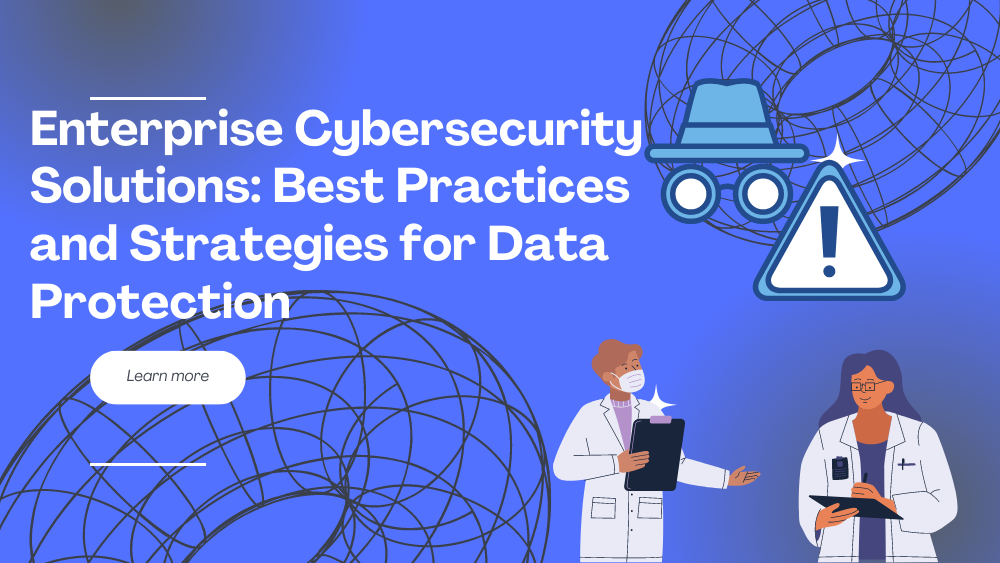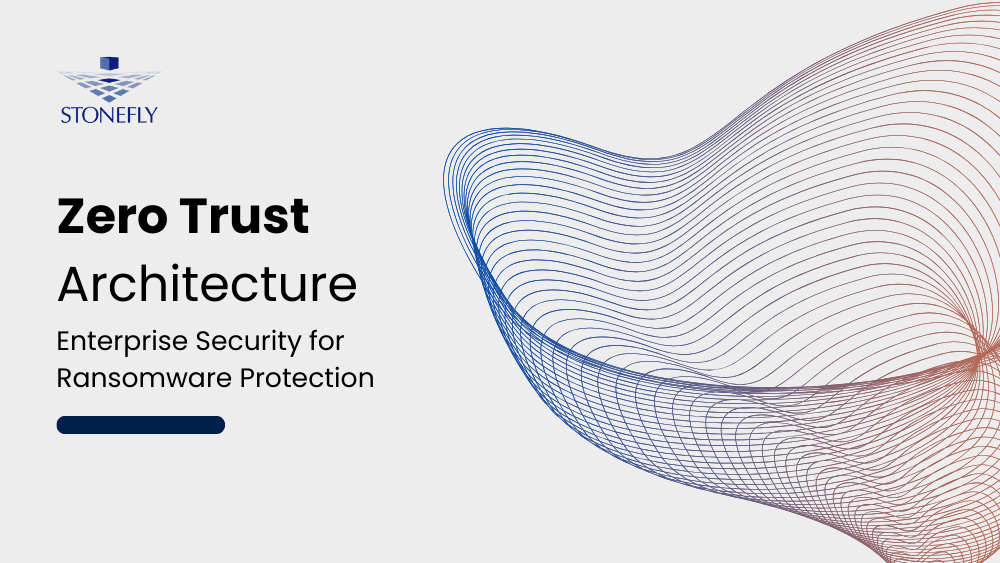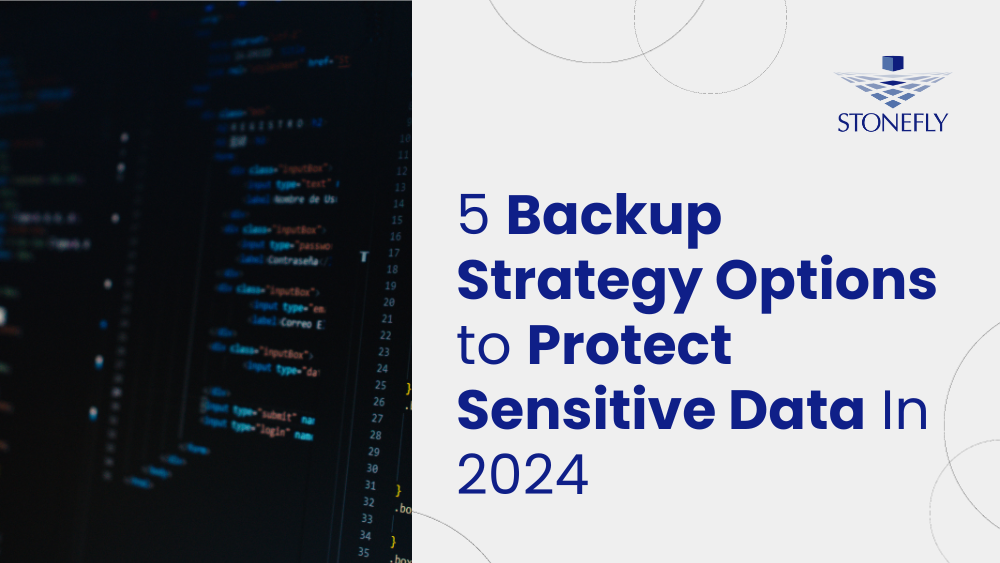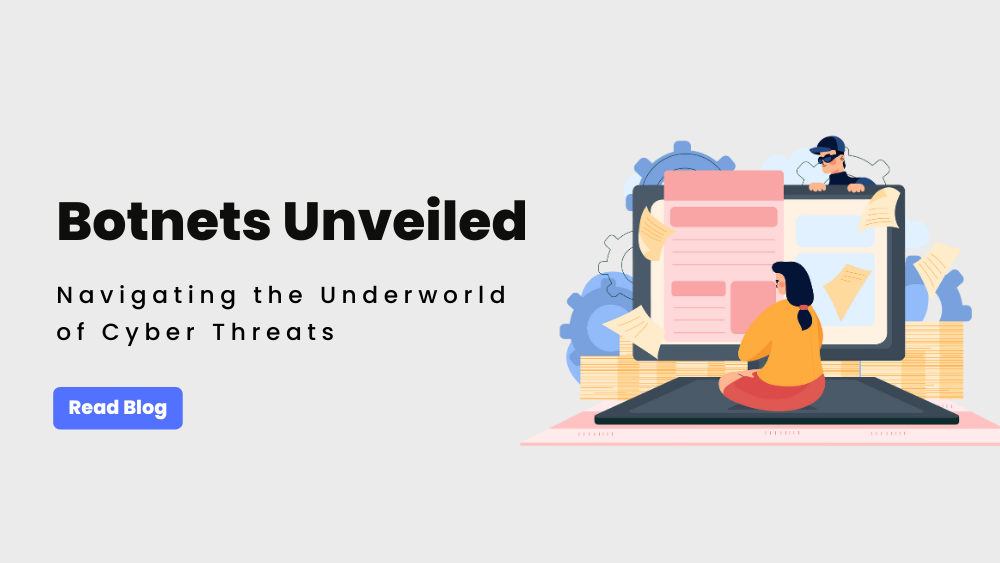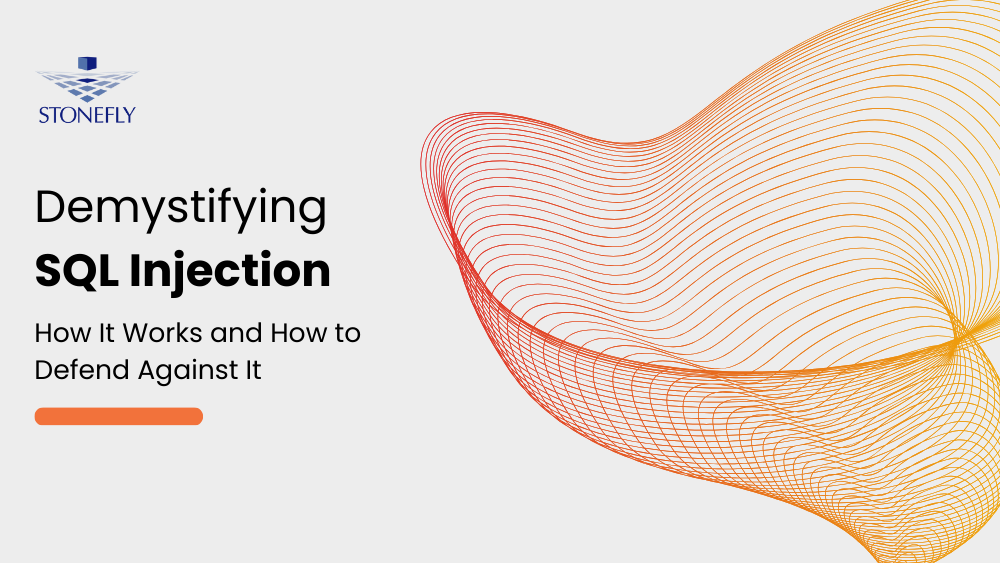Cybersecurity threats are on the rise, and enterprises are a popular target for cybercriminals due to the vast amount of sensitive data they handle. This makes enterprise cybersecurity a critical aspect of risk management. In this blog, we will define enterprise cybersecurity and explain why it’s essential to prioritize it. Additionally, we will provide an overview of the current state of enterprise data security.
What is Enterprise Cybersecurity and Why it’s Important
Enterprise cybersecurity is a set of strategies, technologies, and practices designed to secure an organization’s digital assets and mitigate the risk of cyber threats. Enterprise cybersecurity focuses on safeguarding data, systems, and networks from unauthorized access, use, disclosure, disruption, modification, or destruction.
The importance of enterprise cybersecurity cannot be overstated. A cybersecurity breach can cause significant financial losses, reputational damage, legal consequences, and operational disruptions. It can also put sensitive data at risk of theft, loss, or exposure. Without adequate cybersecurity measures, enterprises can fall prey to a wide range of cyber threats, including malware, ransomware, phishing attacks, social engineering, insider threats, and more.
Overview of the Current State of Enterprise Data Security
The current state of enterprise data security is characterized by a growing number of cyber threats, sophisticated attack techniques, and increasingly complex IT environments. The COVID-19 pandemic has also created new challenges for enterprise cybersecurity, as more employees are working remotely and accessing sensitive data outside of the traditional office environment.
Despite the growing threat landscape, many enterprises are still not taking cybersecurity seriously enough. A recent survey found that over 80% of enterprises believe they are adequately protected against cyber threats, while only 50% have a cybersecurity strategy in place. This suggests that there is a significant gap between perception and reality when it comes to enterprise cybersecurity.
Moreover, the increasing use of cloud services, IoT devices, and other emerging technologies is creating new attack vectors and making it more challenging to secure enterprise data. To mitigate these risks, enterprises must adopt a comprehensive and proactive approach to cybersecurity that involves integrating cybersecurity and enterprise risk management. This includes identifying and assessing cyber risks, developing a risk management strategy, implementing security controls, monitoring and detecting threats, and responding to incidents.
Understanding Enterprise Cybersecurity
As companies continue to expand their digital footprint and operations, the need for enterprise cybersecurity has become increasingly critical. In today’s digital age, enterprise cybersecurity is defined as the practice of securing an organization’s digital assets, including hardware, software, and data, from internal and external cyber threats. The primary goal of enterprise cybersecurity is to protect confidential information from unauthorized access, theft, and other malicious activities.
Implementing enterprise cybersecurity solutions can be beneficial to organizations in several ways. These include mitigating the risk of cyberattacks, enhancing the organization’s reputation, and maintaining customers’ trust. Enterprise cybersecurity solutions also help companies comply with regulatory requirements that ensure data privacy and security.
Different Types of Cybersecurity Solutions
There are various types of enterprise cybersecurity solutions available, including firewalls, intrusion detection systems, and access controls. These solutions are designed to provide various levels of protection against cyber threats. Firewalls are essential in blocking unauthorized access to a network, while intrusion detection systems monitor and report suspicious activities on the network. Access controls, on the other hand, restrict access to confidential information based on pre-defined criteria.
Challenges involved in implementing enterprise cybersecurity
However, implementing enterprise cybersecurity can be challenging. One of the biggest obstacles is the lack of resources, such as skilled personnel and budget. Additionally, as cyber threats continue to evolve, cybersecurity solutions must continuously adapt to address these changes. Organizations must also navigate complex regulatory requirements that vary by industry and location.
Despite these challenges, it’s essential for organizations to prioritize cybersecurity as part of their risk management strategy. The cost of a cyberattack can be significant, including financial loss, reputational damage, and legal implications. By implementing a comprehensive cybersecurity solution, organizations can mitigate the risks and protect themselves against cyber threats.
Integrating Cybersecurity and Enterprise Risk Management
In the past, cybersecurity and enterprise risk management (ERM) were seen as separate entities, but in today’s business landscape, these two disciplines must be integrated for effective risk management. Enterprise risk management (ERM) is the process of identifying, assessing, and managing risks that could impact an organization’s objectives. It involves identifying, assessing, and prioritizing risks, and then taking steps to manage or mitigate those risks.
The importance of ERM has grown over the years as businesses have become increasingly complex and interconnected. ERM can help organizations identify and mitigate risks that could impact their operations, reputation, and financial performance. It can also help organizations comply with regulatory requirements and prepare for unexpected events such as cyberattacks, natural disasters, or supply chain disruptions.
Benefits of integrating cybersecurity and enterprise risk management
Cybersecurity is an integral component of ERM. It involves protecting an organization’s information systems, networks, and data from unauthorized access, use, disclosure, disruption, modification, or destruction. Cyberattacks can come from a variety of sources, including hackers, malware, and insiders, and can cause significant financial and reputational damage to an organization.
By integrating cybersecurity into their ERM frameworks, organizations can better understand and manage their cyber risks. This can involve identifying critical assets, such as customer data or intellectual property, and implementing controls to protect those assets from cyber threats. It can also involve developing incident response plans and conducting regular risk assessments to identify vulnerabilities and potential threats.
There are several benefits to integrating cybersecurity and ERM, including improved risk management, enhanced situational awareness, and better alignment of security investments with business priorities. For example, by understanding their cyber risks, organizations can make more informed decisions about where to invest their security resources.
How organizations can effectively integrate these two disciplines
To effectively integrate cybersecurity and ERM, organizations must first understand their risk profiles and identify the critical assets that need protection. They must also establish clear policies and procedures for managing cyber risks and ensure that all employees are aware of their roles and responsibilities in protecting the organization’s assets. Regular training and awareness programs can help to reinforce these policies and ensure that employees remain vigilant against cyber threats.
Organizations should also consider leveraging risk management frameworks, such as the National Institute of Standards and Technology (NIST) Cybersecurity Framework or ISO 27001, to guide their cybersecurity and ERM efforts. These frameworks provide a structured approach to identifying, assessing, and managing cyber risks, and can help organizations align their efforts with best practices and industry standards.
Integrating cybersecurity and ERM is crucial for effective risk management in today’s complex and interconnected business environment. By understanding their cyber risks, identifying critical assets, and implementing controls to protect those assets, organizations can better manage their cyber risks and protect their operations, reputation, and financial performance.
Enterprise Cybersecurity Solutions – Common Types of Solutions and Their Benefits
The ever-increasing threat of cyberattacks has led to the development of a wide range of enterprise cybersecurity solutions. Below are some of the most common types of solutions and their benefits:
Firewalls
Firewalls are a foundational security measure for any organization. They are a barrier between a network and the internet that controls access to the network. Firewalls block unauthorized access to the network and help prevent malicious traffic from entering or leaving the network.
Intrusion Detection and Prevention Systems (IDPS)
An IDPS is a software application that scans network traffic for suspicious activity and alerts administrators if any is detected. It can also take action to block or prevent the malicious activity from continuing.
Endpoint Security
Endpoint security refers to securing the various endpoints that connect to a network, including laptops, desktops, and mobile devices. Endpoint security solutions can include antivirus software, firewalls, and intrusion detection systems.
Identity and Access Management (IAM)
IAM solutions ensure that only authorized users have access to an organization’s systems and data. IAM solutions can include multi-factor authentication and identity verification.
Data Encryption
Data encryption is the process of encoding data in a way that only authorized users can access it. Encryption can protect sensitive data both at rest and in transit.
Each of these solutions has its benefits and should be used in conjunction with one another to provide the highest level of security. For example, a firewall can be used to block unauthorized traffic, while an IDPS can detect and block malicious traffic. Endpoint security can be used to secure devices, while IAM can be used to ensure that only authorized users can access sensitive data.
An example of these solutions in action can be seen in the financial sector, where banks use a combination of firewalls, IDPS, and IAM to secure their systems and protect customer data. Data encryption is also widely used in industries where sensitive information is frequently transmitted, such as healthcare and government.
While implementing these solutions can be a complex and challenging process, they are essential for maintaining the security of an organization’s data and systems.
In addition to the aforementioned cybersecurity solutions, it is equally important to have backup and disaster recovery solutions in place. In the event of a cybersecurity breach or a natural disaster, having a comprehensive backup and disaster recovery plan can help organizations quickly recover and minimize data loss.
Backup and Disaster Recovery Solutions are an Integral Component of Enterprise Cybersecurity
Backup solutions are designed to take periodic snapshots of an organization’s data and store them in a secure location. These backups can be used to restore data in the event of data loss due to a security breach, hardware failure, or user error. Disaster recovery solutions, on the other hand, are focused on getting an organization’s IT infrastructure up and running as quickly as possible in the event of a natural disaster or major outage.
It’s important for organizations to have both backup and disaster recovery solutions in place, as they provide different levels of protection. A comprehensive backup and disaster recovery plan will include both local and offsite backups, air-gapping and immutability, as well as multiple recovery options, such as bare-metal restores and cloud-based failover.
There are a variety of backup and disaster recovery solutions available on the market, ranging from traditional tape backups to cloud-based disaster recovery solutions. It’s important to evaluate the different solutions based on an organization’s specific needs and choose the one that best fits their requirements. Some of the top backup and disaster recovery solutions on the market include Veeam, Rubrik, and Commvault.
Cybersecurity for Enterprise: Best Practices
Implementing enterprise cybersecurity requires a comprehensive approach that incorporates best practices to minimize risk and ensure business continuity. Here are some of the best practices for implementing cybersecurity for enterprises:
- Develop a comprehensive cybersecurity policy: An effective cybersecurity policy should outline all the necessary measures to safeguard the organization’s digital assets. The policy should include guidelines for creating strong passwords, setting up access controls, performing regular backups, and conducting routine security audits.
- Implement a backup and disaster recovery plan: Backups and disaster recovery solutions are critical components of cybersecurity. They help ensure business continuity in the event of a cyberattack, natural disaster, or other disruptions. It is crucial to regularly back up critical data and applications and have a tested disaster recovery plan in place.
- Train employees: Cybersecurity awareness training is essential to ensure that employees understand the importance of following security policies and best practices. Employees should be educated on how to identify potential threats, such as phishing emails or social engineering attacks, and what to do if they suspect an attack.
- Keep software up-to-date: Keeping software and operating systems up-to-date is essential to ensure that the latest security patches and updates are installed. This helps to reduce the risk of vulnerabilities being exploited by cybercriminals.
- Use multifactor authentication: Multifactor authentication is an extra layer of security that requires users to provide more than one form of authentication to access critical systems or data. This helps to prevent unauthorized access in the event that login credentials are compromised.
- Regularly conduct security assessments: Regular security assessments and audits can help organizations identify vulnerabilities and ensure that security controls are working as intended. It is essential to review and update the security policy and strategy regularly to adapt to the changing threat landscape.
- Partner with a trusted cybersecurity provider: Working with a reputable cybersecurity provider can help ensure that the organization has access to the latest technologies and best practices to protect against cyber threats.
Ongoing education and training for employees, staying up-to-date with the latest cybersecurity threats and trends, and regularly reviewing and updating security policies are critical to ensuring that an organization’s cybersecurity strategy is effective and comprehensive. Incorporating these best practices, along with backup and disaster recovery solutions, can help safeguard an enterprise’s digital assets and ensure business continuity.
Staying Up-to-Date with Cybersecurity Trends is Important
Staying up-to-date with the latest cybersecurity threats and trends is a crucial aspect of maintaining a robust enterprise cybersecurity strategy. Cybercriminals continually evolve their tactics and techniques, which means that businesses must be proactive in understanding and addressing emerging threats. This includes monitoring the latest news and trends in the cybersecurity landscape, regularly updating security protocols and tools, and conducting ongoing employee training and education to keep the workforce informed and vigilant. Additionally, organizations should consider engaging with external experts and partners to stay informed and obtain the necessary expertise to implement the most effective cybersecurity practices.
Conclusion
In conclusion, enterprise cybersecurity is critical to the success and longevity of any organization. By implementing cybersecurity best practices and solutions, enterprises can safeguard their data and assets from cyber threats and ensure business continuity in the event of a security breach. It is essential to stay up-to-date with the latest cybersecurity threats and trends to better protect against emerging risks. In today’s digital landscape, cybersecurity should be a top priority for all enterprises. We encourage readers to take action and invest in enterprise cybersecurity solutions that best fit their organizational needs to stay secure and maintain business continuity.
Protect your enterprise data with StoneFly DR365V Veeam-ready backup and DR solution, the ultimate cybersecurity solution for businesses. With air-gapping, immutability, advanced encryption and comprehensive disaster recovery capabilities, our solution provides peace of mind knowing your data is safe and secure. Contact us today to learn more and strengthen your enterprise cybersecurity.
